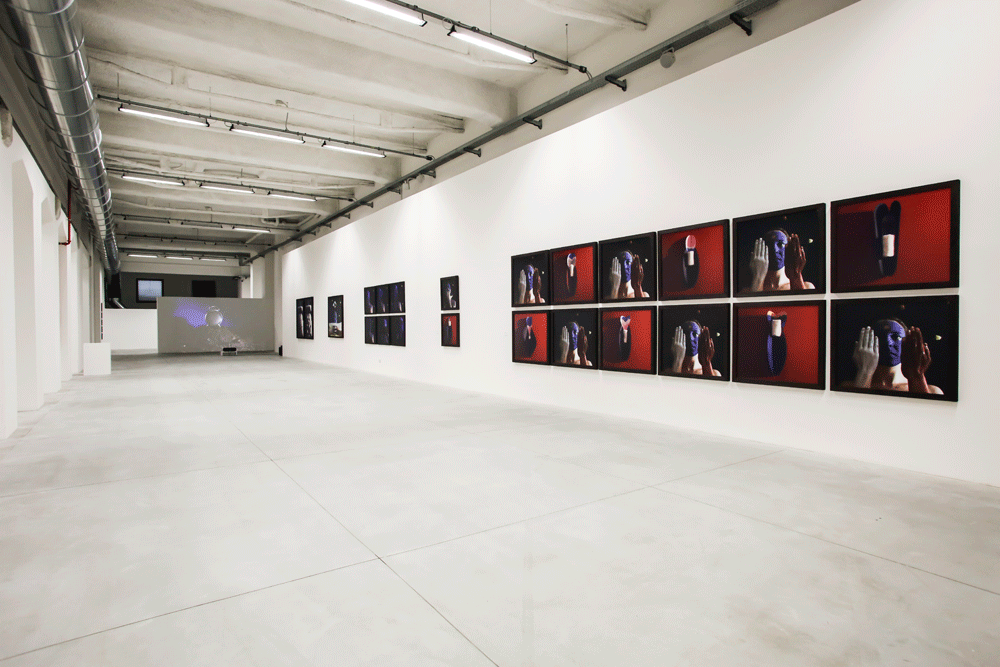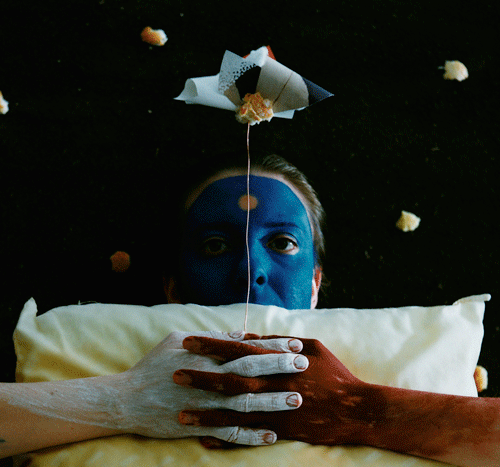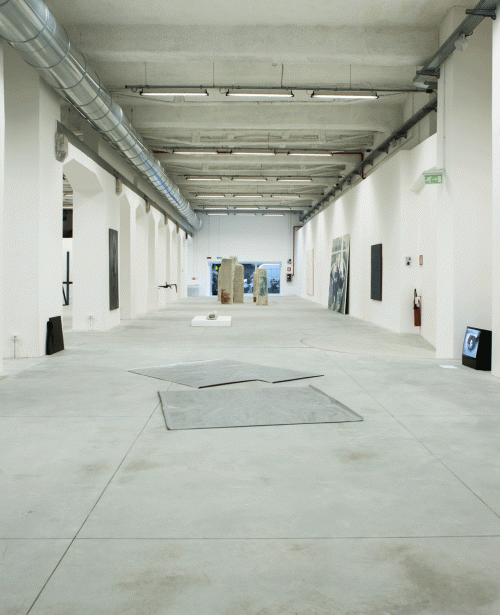Stories
On 26 October 2016, in the temporary space of FM Centro per l’Arte Contemporanea, the Turin gallery Giorgio Persano opened an important exhibition dedicated to Michele Zaza. We interviewed the curator of the exibition, Elena Re.
What kind of exhibition is this?
The exhibition MICHELE ZAZA. Opere/Works 1970–2016 examines in depth Zaza’s expressive research. The curatorial idea is to highlight the historic importance and, above all, the full contemporary significance of this artist in order to capture the energy that animates all his work. As a consequence, the exhibition presents a journey through the works of Michele Zaza. Beginning with his first works in the 1970s, through to those completed today. Beside a large number of very important works, a precious group of writings, projects and documents was selected from the Archive. In effect, this solo exhibition by Michele Zaza hopes to provide an authentic in-depth offering.
Can you explain the choice of dedicating an exhibition to Michele Zaza?
This project is in line with the cultural offering that the exhibition L’Inarchiviabile/The Unarchivable inaugurated. Therefore, if we consider the broad panorama of Italian artists who founded their research in the cultural season of the 1970s, Michele Zaza occupies a place of absolute international significance. His work is unavoidable precisely because it is revolutionary - it forcefully expresses that sense of possibility and truth, that link between art and life that today, more than ever before, is necessary for all of us. For this reason, we have chosen to dedicate him such an important solo exhibition.
What is the history of the Giorgio Persano gallery?
In 1970, Giorgio Persano opened his first gallery in Turin and called it ‘Multipli’. Working mainly with the Arte Povera artists, Giorgio’s gallery was transformed into a workshop for the experimentation on and production of works that started as small editions while maintaining the characteristics and aura of a single piece. As a consequence, important work on multiples was created between 1970 and 1975. It was a brief but very intense experience that then evolved into the gallery’s current activities, without ever losing its fundamental approach. Or, in other words, the desire to allow space for the avant-garde of the contemporary, privileging project work, cultural commitment and the international breadth of the artists – with whom a relationship of close collaboration is always established.
And his relationship with Zaza?
In 2010, I curated an exhibition entitled Geografia senza punti cardinali. La fotografia nell’arte degli anni ’70 in Italia in the Giorgio Persano Gallery. A collective with many artists, this too was a great project - and amongst those involved was Michele Zaza. In 2013, Giorgio decided to dedicate a solo exhibition to him, curated by me, called Il risveglio del paesaggio – with a selection of photographic works and, above all, a vast video-installation that straddled the entire gallery area. This was the beginning of the Persano and Zaza relationship.
How did the collaboration with FM Centro per l’Arte Contemporanea begin?
The L’inarchiviabile exhibition was the context where this collaboration saw its origins. Marco Scotini invited me to participate in a talk on the artist’s book, to remember our friend Giorgio Maffei. A fantastic dialogue began with this encounter, founded on a scientific form of affinity. And from this was born the idea of involving me and curate a possible in-depth examination of Italian art in the 1970s, following the line traced by Marco’s artistic direction. FM Centro per l’Arte Contemporanea then invited the Giorgio Persano Gallery – as a historic gallery that could collaborate on a project in continuity with L’inarchiviabile. And Giorgio responded very positively, proposing this important solo exhibition of Michele Zaza.
What is your background?
I’m an independent critic and curator. I have a rather peculiar journey of travel behind me because I studied Architecture and I hold a PhD degree. However, my work in the academic context opened me up to a ‘culture of the project’ that was crucial for me while working in various aspects of contemporary art. I’ve worked on the project of valorizing Luigi Ghirri’s work - I recall an exhibition which I curated in 2012 at the Castello di Rivoli, Luigi Ghirri – Project Prints, with a book published by JRP|Ringier. For some time now I’ve been studying Italian art in the 1960s and 70s in-depth, with exhibitions and publications both in Italy and abroad. Currently, I’m investigating some of the experiments carried out at that time on the idea of the multiple and which, undoubtedly, recall Persano’s history. I’m the scientific director of the Giorgio Ciam Archive and follow the journeys of various artists – amongst them Michele Zaza on whom I have written and worked extensively.
Can you give us some examples of the works on display?
Of course…Mimesi, 1975 – a diptych where Michele and his father meet in an introspective space. This work is part of a cycle that marks out Zaza’s international success, the relationship with Yvon Lambert and then with Leo Castelli. Cielo abitato, 1985 – an important photographic work but also a video in which the faces of Michele and his wife, Teresa, are transfigured so that they live in a celestial condition. Forma sacra, 1996 – an uncompromising work, in black and white, where Teresa’s face achieves abstraction. Paesaggio magico, 2009 – a very large sized work in which his daughter, Ileana, expresses the freedom of dream and the imagination through her body. Infinito segreto, 2016 – a video that has just been completed where Michele and his partner Anna Maria establish a relationship with the idea of infinity.
In summary, how can we most interestingly read Zaza’s works so as to penetrate their meaning?
A reflection taken from the essay Il corpo (1983) by Umberto Galimberti comes to mind: “The body is always outside itself, it is intentionality, transcendence, the immediate outlet onto things, the original opening, continuous project and, therefore, future projection”. In my opinion, this is the fundamental message to be taken from Michele Zaza’s work.
The fulcrum of FM Centro per l’Arte Contemporanea’s exhibition activities are the exhibitions of private, Italian and international collections. However, equally important is giving space to research activities carried out by private galleries. Within the center, there is one that has a permanent place here, the Laura Bulian Gallery, dedicated to Eastern European art, while a temporary space specifically created for galleries offers them the opportunity for site-specific and ambitious, large scale projects.
It is a unique space of its type in Milan, as is equally unique the exhibition with which it was inaugurated: “Corale” (7 April-15 June 2016). Thought up by three well-known Italian galleries, P420 from Bologna, Monitor from Rome and SpazioA from Pistoia, “Corale” was an innovative project in which the different gallery owners united their forces – without sharing any one artist – to set up a 800m2 space and establish a dialogue between the works of artists from various generations and provenance. Amongst there were: Paolo Icaro, Franco Guerzoni, Irma Blank and the younger Piotr Łakomy, Giulia Cenci and Nicola Samorì.
“We instantly liked the idea of collaborating with two galleries, SpazioA from Pistoia and Monitor from Rome, with whom we feel an affinity due to the generation to which we belong and the research work carried out to date” explained Fabrizio Padovani and Alessandro Pasotti from P420. “The exhibition project was based on the desire to exhibit, within a very large space, works which, for various reasons, it is not always possible to put on display. There was always are very pleasant atmosphere and the exhibition had almost 2,000 visitors which, to us, seems like an extraordinary result. The three galleries have had excellent validations, sales and new contacts so the outcome has been clearly positive”.
Giuseppe Alleruzzo from SpazioA is of the same opinion: “It has been a very positive experience, above all with regard to how we managed to share the space. At the start, it might have seemed a less than easy and even dangerous adventure because this was an open, very large space to be shared with two other galleries. However, it has turned out to be an opportunity to carry out a project of sharing that really worked. Such a fantastic space has a lot of very significant potential. And we also had alongside us such an important and beautiful exhibition as the one curated by Marco Scotini! It also provided us with the chance of seeing some very large works again and ones which we had been unable to display. We also had the opportunity of seeing the sculptures of Esther Kläs again as well as the large painting by Luca Bertolo and Chiara Camoni’s floor”.
“We took part in the project on the invitation of SpazioA and P420” says Delfo Durante from Monitor, “and it immediately appeared to be an interesting and stimulating proposal above all because of the respect we have for both galleries who, not by chance, were our first guests in the first edition of Granpalazzo, which demonstrates our firm belief in the need for a system between galleries. The experience was unquestionably gratifying and involving with excellent outcomes both with regard to our image and to relationships. What remains for us is the confirmation that a project based on quality and collaboration between colleagues with common goals, always leads to good results”.




















